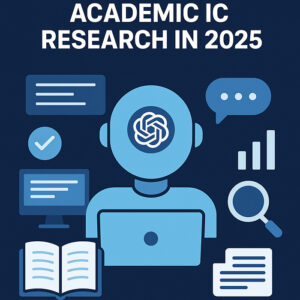Cybersecurity: Threats, Best Practices, and Future Trends
Introduction: The Digital Shield in an Interconnected World
In today’s hyperconnected digital landscape, cybersecurity has evolved from an IT concern to a fundamental business and personal imperative. Cybersecurity encompasses the technologies, processes, and practices designed to protect networks, devices, programs, and data from attack, damage, or unauthorized access.
The stakes have never been higher. In 2024, the global average cost of a data breach reached $4.88 million, with breaches taking an average of 277 days to identify and contain. Even more alarming, cyberattacks occur approximately every 39 seconds, with an estimated 30,000 websites being hacked daily.
These aren’t just statistics—they represent real organizations and individuals suffering real consequences. The 2021 Colonial Pipeline ransomware attack disrupted fuel supplies across the Eastern United States. The 2020 SolarWinds breach compromised thousands of organizations, including multiple U.S. government agencies. The 2017 WannaCry ransomware attack affected over 200,000 computers across 150 countries, including critical healthcare systems in the UK’s National Health Service.
As our digital dependence grows, so does our vulnerability. Understanding and implementing robust cybersecurity measures isn’t just prudent—it’s essential for survival in the digital age.
What is Cybersecurity?
Definition and Scope
Cybersecurity refers to the practice of protecting systems, networks, programs, devices, and data from digital attacks. These cyberattacks are typically aimed at accessing, changing, or destroying sensitive information; extorting money from users; or interrupting normal business processes.
The scope of cybersecurity spans multiple domains:
- Network Security: Protecting network infrastructure and connections
- Application Security: Ensuring software and applications are secure
- Information Security: Protecting data integrity and privacy
- Operational Security: Handling and protecting data assets
- Disaster Recovery: How organizations respond to cyber incidents and restore operations
- End-user Education: Training users to be part of the security solution
Effective cybersecurity requires coordinated efforts throughout an information system, including:
- Hardware
- Software
- Policies, procedures, and guidelines
- People and their behaviors
Importance of Cybersecurity for Individuals and Businesses
For individuals, cybersecurity protects:
- Personal information and identity
- Financial assets and accounts
- Privacy and personal communications
- Digital reputation and social media presence
- Connected home devices and personal networks
For businesses, cybersecurity safeguards:
- Customer data and trust
- Intellectual property and trade secrets
- Financial assets and transactions
- Operational continuity
- Brand reputation and competitive advantage
- Regulatory compliance and avoidance of penalties
The consequences of inadequate cybersecurity can be devastating. Individuals may face identity theft, financial loss, and privacy violations. Businesses risk operational disruption, financial losses, legal liabilities, regulatory penalties, and irreparable damage to customer trust and brand reputation.
Cybersecurity vs. Information Security: Understanding the Difference
Though often used interchangeably, cybersecurity and information security have distinct focuses:
| Aspect | Cybersecurity | Information Security |
|---|---|---|
| Primary Focus | Protection against threats in cyberspace | Protection of information in all forms |
| Scope | Digital information and systems | All information (digital, physical, etc.) |
| Threats Addressed | External digital threats (hackers, malware) | All threats to information (including physical) |
| Objective | Defend against attacks from cyberspace | Ensure confidentiality, integrity, availability |
| Areas of Concern | Networks, internet, cloud systems | Paper documents, digital files, verbal communications |
In practice, these fields overlap significantly, with cybersecurity generally considered a specialized subset of the broader information security domain. Modern security frameworks typically integrate both approaches for comprehensive protection.
Types of Cyber Threats
Understanding the threat landscape is essential for developing effective defenses. Here are the primary categories of cyber threats organizations and individuals face today:
Malware
Malware (malicious software) encompasses various threats designed to damage or gain unauthorized access to systems:
- Viruses: Programs that attach to legitimate files and spread when executed
- Worms: Self-replicating malware that spreads across networks without user action
- Ransomware: Encrypts victims’ data and demands payment for decryption keys
- Spyware: Secretly monitors user activity and harvests sensitive information
- Trojans: Malware disguised as legitimate software
- Rootkits: Provide privileged access while hiding their presence
- Fileless malware: Operates in memory without leaving files on disk
Ransomware has become particularly prevalent, with average ransom payments exceeding $250,000 in 2023 and affecting organizations of all sizes.
Phishing Attacks
Phishing involves deceptive attempts to steal sensitive information or deploy malware by posing as trustworthy entities:
- Email phishing: Mass-distributed fraudulent emails mimicking legitimate organizations
- Spear phishing: Targeted phishing attacks customized for specific individuals or organizations
- Whaling: Targeting high-value individuals like executives or government officials
- Vishing: Voice phishing conducted over phone calls
- Smishing: SMS/text message phishing
- Business Email Compromise (BEC): Compromising business email accounts to conduct fraud
Phishing remains extraordinarily effective, with 85% of organizations experiencing at least one successful phishing attack annually.
Man-in-the-Middle (MITM) Attacks
In MITM attacks, attackers secretly intercept and potentially alter communications between two parties:
- Session hijacking: Taking over authenticated user sessions
- Wi-Fi eavesdropping: Intercepting data over insecure wireless networks
- SSL stripping: Downgrading HTTPS connections to unencrypted HTTP
- Email hijacking: Monitoring and intercepting email communications
- DNS spoofing: Redirecting traffic to fraudulent websites
These attacks are particularly dangerous because victims often have no indication their communications are being compromised.
Denial-of-Service (DoS) & Distributed Denial-of-Service (DDoS) Attacks
DoS and DDoS attacks aim to render systems, servers, or networks unavailable by overwhelming them with traffic:
- Volume-based attacks: Saturating bandwidth with massive traffic
- Protocol attacks: Exploiting server resources with malformed packets
- Application layer attacks: Targeting specific applications or services
- Amplification attacks: Using techniques to multiply attack traffic
- Botnets: Networks of compromised devices used to launch coordinated attacks
DDoS attacks have grown in scale, with some exceeding 2 Tbps (terabits per second) in volume, capable of taking down even the most robust infrastructures.
SQL Injection & Zero-Day Exploits
SQL injection attacks involve inserting malicious code into SQL statements via vulnerable website inputs, potentially allowing attackers to:
- Access sensitive database information
- Modify database data
- Execute administrative operations
- Issue commands to the operating system
Zero-day exploits target previously unknown vulnerabilities before developers can create patches:
- They represent an attacker’s advantage window between vulnerability discovery and patching
- These exploits are highly valued in criminal markets
- They’re often used in advanced persistent threats (APTs) and targeted attacks
- Even major software vendors can be vulnerable, as seen in multiple high-profile incidents
Insider Threats & Social Engineering Attacks
Not all threats come from outside. Significant risks exist from within organizations:
- Malicious insiders: Employees or contractors deliberately causing harm
- Negligent insiders: Unintentional security violations due to carelessness or lack of training
- Compromised insiders: Legitimate users whose credentials have been stolen
Social engineering manipulates people into breaking security protocols or revealing sensitive information:
- Pretexting: Creating a fabricated scenario to obtain information
- Baiting: Offering something enticing to entrap the victim
- Quid pro quo: Promising a benefit in exchange for information
- Tailgating: Following authorized personnel into secure areas
Insider threats are particularly dangerous because they involve individuals who already have legitimate access and knowledge of organizational systems.
Best Cybersecurity Practices for Businesses & Individuals
Implementing foundational security measures can significantly reduce cyber risk. Here are essential practices for both businesses and individuals:
Use Strong Passwords & Multi-Factor Authentication (MFA)
Password best practices:
- Use unique passwords for each account
- Create complex passwords with 12+ characters, including numbers, symbols, and mixed case
- Avoid personal information and common words
- Change passwords periodically, especially after breach notifications
Multi-factor authentication adds crucial protection:
- Combines something you know (password), something you have (device), and/or something you are (biometric)
- Reduces account compromise risk by 99.9% according to Microsoft
- Should be implemented for all critical systems and accounts
- Can include authenticator apps, SMS codes, security keys, or biometrics
Password managers help implement these practices by:
- Generating strong, unique passwords
- Securely storing credentials
- Auto-filling login forms
- Alerting users to potentially compromised passwords
Keep Software and Systems Updated
Maintaining current software is one of the most effective security measures:
Patch management processes should:
- Identify all hardware and software assets
- Monitor for new updates and vulnerabilities
- Test updates before widespread deployment
- Deploy updates quickly for critical vulnerabilities
- Verify successful implementation
Automated updates should be configured when appropriate:
- Operating systems
- Applications and productivity tools
- Mobile devices and applications
- Internet browsers and plugins
- Security software
Legacy system management requires special attention:
- Isolate legacy systems when possible
- Implement additional security controls
- Develop migration plans for outdated technologies
The majority of successful attacks exploit known vulnerabilities for which patches exist but haven’t been applied.
Implement Firewalls and Antivirus Solutions
Multiple security layers provide comprehensive protection:
Firewalls monitor and control network traffic:
- Network firewalls protect entire networks
- Host-based firewalls protect individual devices
- Next-generation firewalls (NGFW) provide application-level filtering
- Web application firewalls (WAF) protect web applications
Antivirus and endpoint protection guard against malicious software:
- Real-time scanning of files and programs
- Behavioral analysis to detect suspicious activity
- Automatic quarantine of suspected malware
- Regular system scans for dormant threats
Advanced endpoint protection extends beyond traditional antivirus:
- Endpoint detection and response (EDR)
- Application whitelisting
- Device control and encryption
- Browser isolation technologies
These technologies should be configured to update automatically and provide regular reporting.
Educate Employees and Users on Cyber Hygiene
Human behavior remains both the greatest vulnerability and potential strength in cybersecurity:
Security awareness training should include:
- Recognizing phishing and social engineering attempts
- Proper data handling procedures
- Password security and MFA usage
- Incident reporting protocols
- Safe internet browsing habits
Effective training approaches:
- Regular, short sessions rather than annual compliance exercises
- Simulated phishing campaigns with immediate feedback
- Gamification and positive reinforcement
- Role-specific training addressing unique risks
- Clear, jargon-free communication
Security culture development:
- Leadership demonstrating security commitment
- Recognizing and rewarding secure behavior
- Making security part of performance evaluations
- Creating an environment where security questions are encouraged
Organizations with strong security awareness programs experience significantly fewer successful breaches.
Use VPNs for Secure Remote Access
With remote work now common, secure access technologies are essential:
Virtual Private Networks (VPNs):
- Encrypt connections between devices and networks
- Mask user IP addresses and locations
- Protect against eavesdropping on public Wi-Fi
- Provide secure access to internal resources
Secure remote access practices:
- Implement VPN with strong encryption
- Require MFA for all remote connections
- Use split tunneling judiciously
- Monitor for abnormal access patterns
- Maintain endpoint security on remote devices
Beyond traditional VPNs:
- Software-defined perimeter (SDP) solutions
- Zero Trust Network Access (ZTNA)
- Secure Access Service Edge (SASE) frameworks
These technologies are particularly important as workforces become increasingly distributed.
Regularly Backup Data and Implement Disaster Recovery Plans
Preparing for incidents is as important as preventing them:
Data backup best practices:
- Follow the 3-2-1 rule: 3 copies, 2 different media types, 1 off-site
- Automate backup processes
- Encrypt backup data
- Test backups regularly to ensure recoverability
- Include system configurations, not just data
Disaster recovery planning:
- Define recovery time objectives (RTOs) and recovery point objectives (RPOs)
- Document recovery procedures
- Assign clear roles and responsibilities
- Conduct regular drills and simulations
- Maintain offline/air-gapped recovery options for ransomware resilience
Business continuity considerations:
- Identify critical systems and processes
- Develop alternate operating procedures
- Establish communication protocols during incidents
- Prepare for various scenarios (cyberattack, natural disaster, etc.)
Organizations with tested recovery plans recover from incidents more quickly and with significantly less financial impact.
Cybersecurity in Different Sectors
Different industries face unique security challenges requiring specialized approaches:
Corporate Cybersecurity (Enterprise Protection & Risk Management)
Large enterprises require comprehensive security programs:
Security governance frameworks:
- Executive-level security leadership (CISO role)
- Security committees with cross-functional representation
- Clearly defined policies and standards
- Regular risk assessments and compliance audits
Defense-in-depth strategies:
- Multiple security layers throughout the organization
- Security Operations Centers (SOCs) for monitoring
- Threat intelligence integration
- Advanced security technologies (SIEM, EDR, etc.)
Third-party risk management:
- Vendor security assessments
- Contractual security requirements
- Ongoing monitoring of supplier security
- Incident response coordination with partners
Enterprise security programs must balance protection with business enablement.
E-commerce & Online Payment Security
Digital commerce depends on maintaining customer trust:
Secure transaction processing:
- PCI DSS compliance for payment handling
- End-to-end encryption for payment data
- Tokenization of sensitive information
- Fraud detection systems
Website security measures:
- Strong HTTPS implementation
- Web application firewalls
- Regular security testing
- Content Security Policy (CSP) implementation
- Protection against common attacks (XSS, CSRF, etc.)
Customer account security:
- Strong authentication options
- Fraud monitoring and alerting
- Secure password reset processes
- Account activity notifications
The dual challenges of convenience and security make e-commerce security particularly complex.
Cybersecurity in Financial Institutions (Banking & FinTech)
Financial services face some of the most sophisticated threats:
Regulatory compliance requirements:
- GLBA (Gramm-Leach-Bliley Act)
- SOX (Sarbanes-Oxley)
- Regional banking regulations
- FinCEN requirements
Advanced security controls:
- Multi-layered authentication
- Real-time fraud monitoring
- Behavioral analytics
- Secure transaction authorization
- Privileged access management
Evolving threats:
- ATM and point-of-sale attacks
- Mobile banking vulnerabilities
- Cryptocurrency-related threats
- Supply chain compromises
- Advanced social engineering
Financial institutions must balance security with customer experience in increasingly digital services.
Healthcare & Patient Data Protection
Healthcare organizations protect both operations and sensitive patient data:
Patient data security requirements:
- HIPAA compliance for protected health information (PHI)
- Secure electronic health record (EHR) systems
- Medical device security
- Patient portal protection
Operational technology security:
- Clinical system availability
- Medical device security
- Network segmentation for clinical systems
- Biomedical device lifecycle management
Industry-specific challenges:
- Legacy systems with limited security
- Life-critical system availability requirements
- Complex ecosystem of technology vendors
- Limited security resources in many organizations
Healthcare remains a primary target for ransomware due to operational criticality and data sensitivity.
Government & National Cyber Defense Strategies
Government entities must protect citizen data and critical infrastructure:
National security concerns:
- Critical infrastructure protection
- Election security
- Intelligence protection
- Nation-state threat actors
- Cyber warfare and espionage defense
Regulatory frameworks:
- FISMA (Federal Information Security Modernization Act)
- FedRAMP for cloud security
- Country-specific regulations and standards
- International cooperative frameworks
Public-private partnerships:
- Information sharing initiatives
- Critical infrastructure protection
- Incident response coordination
- Supply chain security programs
Government cybersecurity affects national security, economic stability, and citizen trust.
Cybersecurity Compliance & Regulations
Organizations must navigate an increasingly complex regulatory landscape:
GDPR (General Data Protection Regulation)
The European Union’s comprehensive data protection regulation:
Key requirements:
- Legal basis for data processing
- Data subject rights (access, correction, deletion, etc.)
- Data breach notification (within 72 hours)
- Data Protection Impact Assessments
- Privacy by design and by default
Global impact:
- Applies to organizations worldwide processing EU resident data
- Potential fines up to 4% of global annual revenue
- Has influenced similar regulations globally
- Requires documented compliance programs
Implementation challenges:
- Data mapping and classification
- Managing consent and preferences
- Cross-border data transfer restrictions
- Balancing data utility with privacy requirements
GDPR has established a new standard for privacy regulations worldwide.
CCPA (California Consumer Privacy Act)
California’s privacy law affects businesses nationwide:
Core provisions:
- Consumer right to know what data is collected
- Right to delete personal information
- Right to opt-out of data sales
- Special protections for minors’ data
- Private right of action for data breaches
Applicability:
- Businesses with >$25M annual revenue
- Companies handling data of >50,000 consumers
- Businesses deriving >50% of revenue from selling consumer data
Compliance considerations:
- Data inventory requirements
- Consumer request handling procedures
- Website privacy notice updates
- Employee training on handling requests
California’s approach has influenced other state privacy laws in the US.
HIPAA (Health Insurance Portability and Accountability Act)
The primary US healthcare data privacy and security regulation:
Security Rule requirements:
- Administrative safeguards (policies, risk analysis, training)
- Physical safeguards (facility access, workstation security)
- Technical safeguards (access controls, transmission security)
- Organizational requirements (business associate agreements)
- Documentation requirements
Privacy Rule components:
- Permitted uses and disclosures of PHI
- Patient rights to access and amend records
- Minimum necessary standard for information use
- Authorizations for non-standard uses
Enforcement mechanisms:
- Office for Civil Rights (OCR) investigations
- Potential penalties up to $1.5M per violation category
- Breach notification requirements
- Corrective action plans
Healthcare organizations must balance data accessibility for care with robust protection.
ISO 27001 & NIST Cybersecurity Framework
Voluntary frameworks providing structured approaches to security:
ISO 27001:
- International standard for information security management
- Process-based approach using PDCA cycle
- Comprehensive controls across 14 domains
- Certification available through accredited bodies
- Regular surveillance audits to maintain certification
NIST Cybersecurity Framework:
- Five core functions: Identify, Protect, Detect, Respond, Recover
- Flexible implementation options for different organizations
- Integration with detailed NIST special publications (800 series)
- Used as basis for many regulatory and contractual requirements
- Regular updates to address emerging threats
These frameworks provide structured approaches to building comprehensive security programs regardless of industry.
Cybersecurity Trends & Future Predictions
The security landscape continues to evolve with emerging technologies and threat patterns:
The Rise of AI & Machine Learning in Cybersecurity
Artificial intelligence is transforming both attack and defense:
Defensive applications:
- Anomaly detection in network traffic and user behavior
- Automated threat hunting and investigation
- Vulnerability prediction and prioritization
- Intelligent security orchestration and response
- Phishing and malware detection
Offensive AI concerns:
- AI-powered password cracking
- Intelligent evasion of security controls
- Automated vulnerability discovery
- Highly convincing deepfakes for social engineering
- Personalized phishing at scale
Challenges and limitations:
- Data quality requirements
- Potential for adversarial attacks against AI systems
- Alert fatigue from false positives
- Need for human oversight and interpretation
- Integration with existing security stacks
The AI security arms race is accelerating, with both attackers and defenders leveraging these technologies.
Growth of Zero Trust Architecture (ZTA)
Zero Trust principles are replacing traditional perimeter-based security:
Core principles:
- “Never trust, always verify”
- Least privilege access
- Microsegmentation
- Continuous verification
- Assume breach mentality
Implementation components:
- Strong identity authentication and authorization
- Device health verification
- Session-based access controls
- Encrypted communications everywhere
- Continuous monitoring and validation
Adoption challenges:
- Legacy system integration
- User experience concerns
- Implementation complexity
- Cultural resistance to restricted access
- Resource requirements
Organizations are increasingly recognizing that traditional perimeter security is insufficient in modern environments.
Increase in Cloud Security & Hybrid Work Challenges
Distributed work and cloud adoption create new security paradigms:
Cloud security evolution:
- Shared responsibility models
- Cloud Security Posture Management (CSPM)
- Cloud Workload Protection Platforms (CWPP)
- Cloud Access Security Brokers (CASB)
- Serverless security approaches
Secure hybrid work enablement:
- Secure access from any device, anywhere
- Endpoint security for unmanaged devices
- Zero Trust Network Access (ZTNA) adoption
- Data-centric security controls
- Updated security awareness for remote workers
Emerging challenges:
- Shadow IT discovery and management
- Supply chain visibility in cloud environments
- Consistent security across multi-cloud deployments
- Data sovereignty and compliance
- Integration between cloud and on-premises security
The perimeter has permanently dissolved, requiring fundamentally different security approaches.
Blockchain Technology for Cybersecurity
Blockchain offers novel approaches to security challenges:
Potential applications:
- Decentralized identity management
- Secure supply chain validation
- Immutable audit logs
- Secure IoT device authentication
- Smart contract-based security automation
Implementation considerations:
- Performance and scalability concerns
- Integration with existing systems
- Governance and key management
- Standards and interoperability
- Energy consumption in some implementations
Current state of adoption:
- Mostly pilot projects and specific use cases
- Growing enterprise interest
- Maturing technology and frameworks
- Increasing regulatory attention
Blockchain security applications are still emerging but show promise for specific use cases.
Cybersecurity for IoT (Internet of Things) & Smart Devices
The explosion of connected devices creates vast new attack surfaces:
IoT security challenges:
- Limited computing resources for security
- Long operational lifespans without updates
- Insecure default configurations
- Physical access concerns
- Massive scale of deployment
Emerging protection approaches:
- IoT-specific security frameworks
- Network segmentation for connected devices
- Anomaly detection for device behavior
- Automated patching and updates
- Software-defined perimeter approaches
Regulatory developments:
- IoT security legislation in multiple countries
- Industry standards and certifications
- Consumer protection requirements
- Critical infrastructure IoT regulations
The proliferation of connected devices represents one of the largest growing threat surfaces in cybersecurity.
Cybersecurity Tools & Technologies
Organizations can leverage various technologies to enhance their security posture:
Best Antivirus and Anti-Malware Software
Modern endpoint protection extends far beyond traditional antivirus:
Enterprise endpoint protection platforms:
- CrowdStrike Falcon
- Microsoft Defender for Endpoint
- SentinelOne
- Trend Micro Apex One
- Sophos Intercept X
Key capabilities to evaluate:
- Machine learning detection capabilities
- Behavioral analysis
- Exploit prevention
- Ransomware-specific protections
- Offline protection
- Performance impact
- Management console capabilities
Deployment considerations:
- Cloud-managed vs. on-premises
- Integration with other security tools
- Reporting and compliance capabilities
- Scalability for large environments
- Multi-OS support requirements
Next-generation solutions focus on behavioral detection rather than simply signature matching.
Top Penetration Testing Tools (Metasploit, Nmap, Burp Suite)
Security testing tools help identify vulnerabilities before attackers:
Network scanning and enumeration:
- Nmap for network discovery and service detection
- Wireshark for packet analysis
- Shodan for Internet-connected device discovery
- Masscan for large-scale port scanning
Vulnerability assessment tools:
- Nessus for comprehensive vulnerability scanning
- OpenVAS as an open-source alternative
- Qualys for cloud-based scanning
- Nikto for web server scanning
Exploitation frameworks:
- Metasploit for exploiting known vulnerabilities
- Burp Suite for web application testing
- OWASP ZAP for web security assessment
- SQLmap for database vulnerability testing
Specialized testing tools:
- Aircrack-ng for wireless network security
- John the Ripper and Hashcat for password testing
- Social-Engineer Toolkit for phishing simulations
- PowerShell Empire for post-exploitation
These tools should be used only with proper authorization and by qualified security professionals.
SIEM (Security Information and Event Management) Solutions
SIEM systems provide centralized visibility and analysis:
Leading SIEM platforms:
- Splunk Enterprise Security
- IBM QRadar
- Microsoft Sentinel
- LogRhythm
- Exabeam
Core SIEM capabilities:
- Log collection and normalization
- Real-time event correlation
- Alert generation and management
- Compliance reporting
- Incident investigation tools
- Threat intelligence integration
Implementation considerations:
- On-premises vs. cloud deployment
- Log volume and retention requirements
- Use case development and tuning
- Integration with security orchestration
- Skilled personnel requirements
SIEM implementation success depends heavily on proper planning, use case development, and ongoing tuning.
Cyber Threat Intelligence Platforms
Threat intelligence enhances proactive security measures:
Threat intelligence sources:
- Commercial intelligence feeds
- Open-source intelligence
- Information sharing communities
- Internal threat data
- Government advisories
Intelligence platforms:
- Recorded Future
- ThreatConnect
- Anomali ThreatStream
- MISP (Open Source)
- EclecticIQ
Operationalizing threat intelligence:
- Integration with security controls
- Automated indicator blocking
- Strategic intelligence for planning
- Tactical intelligence for detection
- Operational intelligence for response
Effective threat intelligence programs focus on relevance to the organization rather than simply collecting more data.
Case Studies: Real-World Cybersecurity Breaches & Lessons Learned
Examining major incidents provides valuable lessons for improving security:
SolarWinds Supply Chain Attack (2020)
Incident Overview:
- Attackers compromised SolarWinds’ build environment
- Malicious code inserted into legitimate software updates
- Approximately 18,000 organizations installed affected updates
- Sophisticated post-exploitation activities at selected targets
- Notable victims included multiple US government agencies and major corporations
Attack Methods:
- Initial access through compromised build systems
- Malicious code dormant for two weeks before activation
- Stealthy command and control infrastructure
- Patient, low-and-slow approach to avoid detection
- Careful targeting of specific high-value victims
Key Lessons:
- Supply chain security is critical yet often overlooked
- Software development environments require robust protection
- Traditional detection methods may miss sophisticated attacks
- Third-party risk extends beyond operational vendors
- Recovery from systemic compromise requires extensive effort
Colonial Pipeline Ransomware Attack (2021)
Incident Overview:
- Ransomware attack on Colonial Pipeline by DarkSide group
- Led to complete shutdown of 5,500 miles of fuel pipeline
- Caused fuel shortages across the Eastern United States
- $4.4 million ransom paid (portion later recovered by FBI)
- Full recovery took nearly a week
Attack Methods:
- Initial access through compromised VPN credentials
- Lack of MFA allowed unauthorized access
- Ransomware deployment caused operational technology concerns
- Voluntary shutdown to prevent potential spread to critical systems
Key Lessons:
- Critical infrastructure often has IT/OT interdependencies
- Single factor authentication remains a significant vulnerability
- Physical consequences of cyber attacks can be severe
- Importance of segmentation between IT and operational systems
- Incident response plans must consider business continuity
Equifax Data Breach (2017)
Incident Overview:
- Breach of credit reporting agency Equifax
- 147 million consumers’ sensitive data exposed
- Included Social Security numbers, birth dates, addresses
- $700 million settlement with regulatory authorities
- Massive impact on consumer credit monitoring landscape
Attack Methods:
- Exploitation of unpatched Apache Struts vulnerability
- Attackers maintained access for 76 days before discovery
- Encrypted traffic used to exfiltrate data
- Basic security measures could have prevented the breach
Key Lessons:
- Patch management is fundamental to security
- Asset inventory is necessary to ensure complete patching
- Security monitoring must detect unusual data movements
- Data minimization reduces breach impact
- Executive responsibility for security oversight is critical
Microsoft Exchange Server Attacks (2021)
Incident Overview:
- Zero-day vulnerabilities in on-premises Exchange servers
- Initially exploited by nation-state group Hafnium
- Later exploited by multiple criminal groups
- Affected tens of thousands of organizations worldwide
- Emergency patches released, but many systems remained vulnerable
Attack Methods:
- Initial exploitation of previously unknown vulnerabilities
- Web shells deployed for persistent access
- Credential theft from compromised systems
- Targeting of specific industries for intelligence collection
Key Lessons:
- On-premises systems require rapid patching capabilities
- Zero-day vulnerabilities can be exploited at massive scale
- Speed of response directly impacts breach outcomes
- The window between patch availability and implementation is critical
- Cloud-based alternatives may offer security advantages
Frequently Asked Questions (FAQs)
What is the most common cyber threat today?
The most common cyber threat today is phishing, accounting for more than 80% of reported security incidents. Phishing attacks use social engineering techniques to trick users into revealing sensitive information or installing malware by posing as trusted entities. These attacks have evolved significantly:
- Spear phishing targets specific individuals with personalized content
- Business Email Compromise focuses on payment fraud and wire transfers
- Credential phishing aims to steal login information for further attacks
- Malware distribution uses phishing as the initial access vector
What makes phishing particularly dangerous is its exploitation of human psychology rather than technical vulnerabilities. Even organizations with robust technical controls remain vulnerable if employees aren’t properly trained to recognize and report these attacks.
How can small businesses improve cybersecurity?
Small businesses can significantly improve their security posture with focused efforts on high-impact measures:
Implement basic security hygiene:
- Use strong, unique passwords and multi-factor authentication
- Keep all software and systems updated
- Back up critical data regularly using the 3-2-1 method
- Use business-grade security software
Develop simplified security policies:
- Create clear guidelines for data handling
- Establish bring-your-own-device (BYOD) policies
- Document incident response procedures
- Define access control principles
Leverage cloud security services:
- Utilize built-in security features of cloud platforms
- Consider managed security services for monitoring
- Use cloud-based email security with advanced protection
- Implement secure cloud backup solutions
Conduct regular employee training:
- Focus on phishing awareness and prevention
- Train staff on secure remote work practices
- Create a culture where security questions are encouraged
- Use free resources from organizations like CISA
Consider cyber insurance:
- Evaluate coverage options for data breaches
- Understand policy requirements and exclusions
- Use insurance provider resources for risk reduction
Small businesses should focus on implementing these fundamentals before investing in advanced security technologies.
What are the best cybersecurity certifications for professionals?
The most valuable cybersecurity certifications depend on career goals and experience level:
For entry-level professionals:
- CompTIA Security+: Foundational security concepts and best practices
- Certified Information Systems Security Professional (CISSP) Associate: Early path toward full CISSP
- Certified Ethical Hacker (CEH): Basic penetration testing and ethical hacking skills
For mid-career advancement:
- CISSP: Comprehensive security management and architecture
- Certified Information Security Manager (CISM): Security management focus
- SANS/GIAC certifications: Technical specialization in specific domains
- Offensive Security Certified Professional (OSCP): Hands-on penetration testing skills
For specialized roles:
- Certified Cloud Security Professional (CCSP): Cloud security expertise
- Healthcare Information Security and Privacy Practitioner (HCISPP): Healthcare focus
- Certified Information Privacy Professional (CIPP): Privacy specialization
- Certified Incident Handler (GCIH): Incident response specialization
The most valuable certifications combine respected credentials with practical, hands-on skills relevant to employer needs.
What’s the future of cybersecurity?
The cybersecurity landscape is evolving rapidly, with several key trends shaping its future:
AI-powered security operations will become standard, with:
- Automated threat hunting and investigation
- Predictive security analytics
- AI vs. AI battles between attackers and defenders
- Significant reduction in alert fatigue and false positives
Zero Trust architecture will replace traditional perimeter security:
- Identity-centered security rather than network perimeter
- Continuous verification replacing “trust but verify”
- Microsegmentation of networks and applications
- Context-aware access controls based on risk
Security talent transformation:
- Greater diversity in security workforce
- Automation of routine security tasks
- Emphasis on business-aligned security skills
- Specialized roles for emerging technologies
Regulatory landscape expansion:
- Global harmonization of some security requirements
- Industry-specific regulations increasing
- Mandatory security incident reporting
- Greater executive accountability for security failures
Quantum computing impacts:
- Need for quantum-resistant cryptography
- New approaches to encryption
- Potential for both defensive and offensive applications
- Major infrastructure upgrades required
The most successful organizations will be those that view security as a business enabler rather than simply a cost center or compliance requirement.
Conclusion: Building a Resilient Security Posture
In today’s increasingly connected world, cybersecurity has evolved from a technical specialty to a fundamental business and personal imperative. The threat landscape continues to expand in sophistication and impact, with attacks targeting organizations of all sizes across every sector.
Effective cybersecurity requires a multi-layered approach that combines:
- Strong technical controls and defensive technologies
- Well-designed policies and governance frameworks
- Regular employee awareness and training
- Proactive threat intelligence and monitoring
- Robust incident response capabilities
- A culture of security throughout the organization
Most importantly, cybersecurity must be approached as a continuous process rather than a one-time project. Threats evolve, technologies change, and organizations must adapt accordingly. The most resilient organizations build security into their operations and culture rather than treating it as an afterthought.
Call to Action
As cyber threats continue to evolve, consider these steps to strengthen your security posture:
- Assess your current security state against frameworks like the NIST Cybersecurity Framework
- Implement basic security hygiene across all systems and devices
- Train users regularly on security awareness and emerging threats
- Develop and test incident response plans before they’re needed
- Stay informed about evolving threats relevant to your organization
Remember that perfect security is impossible, but resilience is achievable. By taking a risk-based approach focused on your most important assets and likely threats, you can significantly reduce your cyber risk and be prepared to respond effectively when incidents occur.
[Link to related article: “Creating an Effective Cybersecurity Awareness Program”]
[Link to related article: “Incident Response Planning: Preparing for the Inevitable”]
[Link to related article: “Zero Trust Architecture: Beyond the Perimeter Security Model”]
<!– Schema Markup for SEO –> <script type=”application/ld+json”> { “@context”: “https://schema.org”, “@type”: “Article”, “headline”: “Cybersecurity: Threats, Best Practices, and Future Trends”, “description”: “Comprehensive guide to modern cybersecurity threats, defense strategies, compliance requirements, and emerging trends for businesses and individuals.”, “author”: { “@type”: “Organization”, “name”: “Research.Help” }, “publisher”: { “@type”: “Organization”, “name”: “Research.Help”, “logo”: { “@type”: “ImageObject”, “url”: “https://research.help/logo.png” } }, “datePublished”: “2025-03-12”, “dateModified”: “2025-03-12”, “mainEntityOfPage”: { “@type”: “WebPage”, “@id”: “https://research.help/cybersecurity-threats-best-practices” }, “keywords”: “cybersecurity, cyber threats, data protection, ethical hacking, ransomware attack, phishing scams, network security, cybersecurity best practices, cybersecurity for businesses, AI in cybersecurity” } </script> <!– Meta Title Suggestion for WordPress –> <!– Cybersecurity in 2025: Critical Threats, Proven Defenses & Emerging Trends –> <!– Meta Description Suggestion for WordPress –> <!– Learn how to protect your business from evolving cyber threats with our comprehensive guide to cybersecurity best practices, compliance requirements, and future technology trends. –> <!– Note: Add relevant images from your own library with proper alt text to enhance engagement. –>









